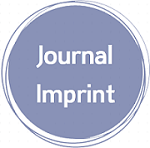Culture of Microalgae with Ultrafiltered Seawater: A Feasibility Study
Downloads
The culture of microalgae is important for the production and maintenance of bivalves. One of the major challenges is to maintain the reliability of microalgae forages over the long term. The aim of this work is to use Ultrafiltered (UF) seawater to cultivate them. Thus, cultures in a volume of 300 L of 2 species of microalgae Tetraselmis and T-isochrysis, were monitored in UF water (membrane pore size: 20 nm) and in sea water usually used on the Ifremer mollusk experimental platform of Bouin (France) (Prefiltration, 3 filtrations and 2 UV). The major result is the securing of microlagae cultures with the absence of parasites in all cultures supplied with ultrafiltered water, unlike analyses of the various control cultures. In the case of T-isochrysis, 3 cultures out of 4 resulted in higher microalgae concentrations, up to 30%, in ultrafiltered water thus bringing a benefit on the algal density. These conclusions and the ease of recovering water (linked to the reduction in treatment stages) allowed a transfer of technology. In fact the 300 L cultures hitherto carried out on the experimental platform are now produced in ultrafiltered water since early 2019.
Downloads
Guedes Catarina, A, & Xavier, F. (2012). Nutritional Value and Uses of Microalgae in Aquaculture. Aquaculture. doi:10.5772/30576.
Helm, M. M. (2004). Hatchery culture of bivalves: a practical manual (No. 639.2 F3 v. 471). FAO.
Wallace, R. K., Waters, P., & Rikard, F. S. (2008). Oyster hatchery techniques. Southern Regional Aquaculture Center.
Brown, M.R., Jeffrey, S.W., Volkman, J.K., Dunstan, G.A., (1997). Nutritional properties of microalgae for mariculture. Aquaculture, Fish Nutrition et Feeding Proceedings of the Sixth International Symposium on Feeding et Nutrition in Fish 151(1-4), 315–331. doi:10.1016/s0044-8486(96)01501-3.
Wikfors, G. H., Patterson, G. W., Ghosh, P., Lewin, R. A., Smith, B. C., & Alix, J. H. (1996). Growth of post-set oysters, Crassostrea virginica, on high-lipid strains of algal flagellates Tetraselmis spp. Aquaculture, 143(3-4), 411–419. doi:10.1016/0044-8486(96)01265-3.
Ifremer, (2013), Microalgues. Aquaculture. Available online: https://aquaculture.ifremer.fr/les-Filieres/Filiere-Algues/La-decouverte-des-algues/Microalgues (accessed on 7 September 2019).
Mok, J. S., Ryu, A., Kwon, J. Y., Kim, B., & Park, K. (2019). Distribution of Vibrio species isolated from bivalves and bivalve culture environments along the Gyeongnam coast in Korea: Virulence and antimicrobial resistance of Vibrio parahaemolyticus isolates. Food Control, 106, 106697. doi:10.1016/j.foodcont.2019.06.023.
Lumbessy, S. Y. (2019). Sem-sterile culture of Gracilaria salicornia seaweed (parental) on various media. Proceedings of the 2nd International Conference on Bioscience, Biotechnology, and Biometrics 2019. doi:10.1063/1.5141331.
Wardani, A. K., Hakim, A. N., Khoiruddin, & Wenten, I. G. (2017). Combined ultrafiltration-electrodeionization technique for production of high purity water. Water Science and Technology, 75(12), 2891–2899. doi:10.2166/wst.2017.173.
Greenlee, L. F., Lawler, D. F., Freeman, B. D., Marrot, B., & Moulin, P. (2009). Reverse osmosis desalination: water sources, technology, and today's challenges. Water research, 43(9), 2317-2348. doi: 10.1016/j.watres.2009.03.010.
Ferguson, R. L., Buckley, E. N., & Palumbo, A. V. (1984). Response of marine bacterioplankton to differential filtration and confinement. Applied and Environmental Microbiology, 47(1), 49–55. doi:10.1128/aem.47.1.49-55.1984.
Huq, A., Xu, B., Chowdhury, M. A., Islam, M. S., Montilla, R., & Colwell, R. R. (1996). A simple filtration method to remove plankton-associated Vibrio cholerae in raw water supplies in developing countries. Applied and Environmental Microbiology, 62(7), 2508–2512. doi:10.1128/aem.62.7.2508-2512.1996.
Wenten, I. G., Steven, S., Dwiputra, A., Khoiruddin, & Hakim, A. N. (2017). From lab to full-scale ultrafiltration in microalgae harvesting. Journal of Physics: Conference Series, 877, 012002. doi:10.1088/1742-6596/877/1/012002.
Cordier, C., Charpin, L., Stavrakakis, C., Papin, M., Guyomard, K., Sauvade, P., … Moulin, P. (2019). Ultrafiltration: A solution to recycle the breeding waters in shellfish production. Aquaculture, 504, 30–38. doi:10.1016/j.aquaculture.2019.01.045.
Cordier, C., Stavrakakis, C., Dupuy, B., Papin, M., Sauvade, P., Coelho, F., & Moulin, P. (2019). Ultrafiltration for environment safety in shellfish production: Removal of oyster gametes in hatchery effluents. Aquacultural Engineering, 84, 80–90. doi:10.1016/j.aquaeng.2018.12.008.
Cordier, C., Stavrakakis, C., Sauvade, P., Coelho, F., & Moulin, P. (2018). Air Backwash Efficiency on Organic Fouling of UF Membranes Applied to Shellfish Hatchery Effluents. Membranes, 8(3), 48. doi:10.3390/membranes8030048.
Guilbaud, J., wyart, Y., Kaag, K., moulin, P. (2018). Comparison of Seawater and Freshwater Ultrafltration on Semi-Industrial Scale: Ballast Water Treatment Application. Journal of Membrane Science and Research, 4(3), 136-145. doi:10.22079/jmsr.2017.68010.1147.
Guilbaud, J., Wyart, Y., & Moulin, P. (2018). Economic viability of treating ballast water of ships by ultrafiltration as a function of the process position. Journal of Marine Science and Technology, 24(4), 1197–1208. doi:10.1007/s00773-018-0618-3.
- This work (including HTML and PDF Files) is licensed under a Creative Commons Attribution 4.0 International License.












